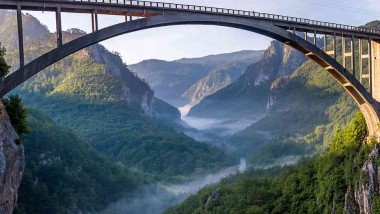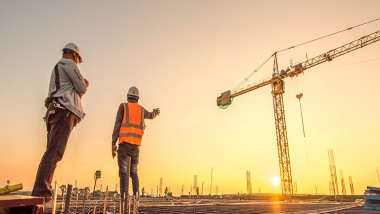Infrastructure 4.0 – Are You Ready?
Highlights
- Infrastructure as an investment was mutating fast before the pandemic struck, and this crisis is likely to play the role of a catalyst to fast forward their digital transformation
- Vauban has launched with the strategic consultancy boutique Altermind, a study to analyse and anticipate the major long-term trends. Four different economic scenarios are likely to come from this crisis (Chaos, Degrowth, the Roaring Twenties, a Green New Deal)
- Infrastructure 4.0 echoing “Industry 4.0” consists in the adoption of the 4th industrial revolution technology across all infrastructure lifecycle stages by introducing new digital processes, fostering their resilience and their capacity to grow
Resources
Investing in infrastructures means investing in assets that have proved historically their resilience but in the face of the current technological jump, that will put connectivity at the heart of our economies, it will require to cope with a 4th industrial revolution based on digitalization. Investing in infrastructures will require to select the infrastructures that will be able to stay ahead of the curve by resiliently providing essential services to communities for several generations as the needs of these communities will evolve fast and accordingly.
Persisting with the investment approaches of the past now carries significant risk. Infrastructure as an investment was already mutating before the pandemic struck. Post-pandemic, the changes are likely to be transformational.
The exact paths of change cannot be predicted, meaning we are entering an era of great uncertainty, as a white paper by Vauban Infrastructure Partners explains. The paper1, The Era of Infrastructure 4.0, sets out four plausible macroeconomic scenarios as the world will emerge from COVID-19, and proposes a response to these scenarios which can be adopted by infrastructure investors.
Powerful Forces at Work
“Let’s be clear, the pandemic is not the primary driver of the shifting infrastructure landscape, it will nevertheless fast forward the historical process that was already at work,” says Gwenola Chambon, chief executive of Vauban Infrastructure Partners. “Three major transitional factors have combined themselves over the last decade.”
The first, a societal and demographic transition, has seen a digital-native generation emerge, with more fragmented life and job patterns, and a tendency to cluster in cities with a notable decline of middle class everywhere. The increasing number of people living in cities has created a spatial development gap between rural and urban areas. Meanwhile, with a few exceptions, the global population has inexorably aged. All of this creates new needs in terms of infrastructures.
Second, an environmental transition is taking place, whereby concerns about climate change and environmental risks have arose everywhere and are pushing governments, businesses to adapt to meet carbon targets and higher environmental standards.
Last, but not least, there has been a frenzied technological transition, in which infrastructure is being progressively enhanced through the application of data and AI.
COVID-19 is therefore taking place at a time when the combination of these three transitions is likely to generate a major acceleration of the shift they will induce. Before this crisis one could have wondered: what happens when everybody works from home and communicates only at distance? What happens when entire schools, universities, health services go online?
In normal times, governments, businesses, education boards would never have agreed to conduct such largescale experiments! Decisions that in normal times could have taken years of deliberation were passed in a matter of weeks in order to manage this pandemic while connectivity has become the only tool to maintain social cohesion. Now that the consequences of the pandemic are upon us, it has become easier to conceive of the damage that climate change could wreak on us. As a result, ESG issues are rising up the agenda of both the public and policymakers.
The COVID-19 is expected to play the role of a catalyst of long-term trends that started before and will be further emphasized in the coming years. This is particularly true for infrastructure assets procuring vital amenities to communities and services that underpin economic development. The big question now is whether these unexpected benefits of the pandemic will persist. The political and financial impact of COVID-19 have been severe and it remains to be seen whether policymakers react wisely and rationally.
Four Post-pandemic Scenarios for Infrastructure
Vauban believes one of four different economic scenarios will come to dominate in the coming years. These are:
- Chaos
- Degrowth
- The Roaring Twenties
- A Green New Deal
In the Degrowth scenario, the world shifts to a less carbon-intensive and low-tech model. Restraint becomes the prevailing by-word, there is a new agricultural model, and priority is given to medium-sized cities, and shorter production and logistics chains. While OECD countries just about maintain living standards at an acceptable level, progress in developing countries slows due to the lack of broad co-operation, increasing the risk of sovereign defaults.
In the Roaring Twenties scenario, a broad growth consensus revives the economy and reduces unemployment in the short-run, and international co-operation prevails. There is a rapid return to old consumption patterns, safeguarding legacy businesses (automotive, air transport, tourism) and investment in mature industries. The economy recovers rapidly and there is incremental innovation, but environmental costs explode and inequality carries on growing.
The most positive scenario is the Green New Deal scenario, in which the shock of the COVID-19 crisis and the consequent focus on health and environmental risks encourage the international community to address short and long-term issues alike. Green “new deals” proliferate, and public policies prioritize and optimize “co-benefits”, such as economic, environmental and health impacts.
The Green New Deal harnesses the power of data in order to create more efficient infrastructure such as smart grids, faster broadband, stronger bridges and safer highways. Inclusiveness is a key aspect of the Green New Deal, bringing significant wealth transfer.
In their analysis Altermind and Vauban tried to analyse the long-term impacts of the crisis. While it is impossible to predict what the exact outcome of the sanitary and economic crisis will be, different scenarios could emerge in the coming years.
The question is whether the threefold environmental, technological and societal transition that have been identified will be either reversed or accelerated. Which scenario will prevail is currently unknowable
How Will That Impact Investors?
“If this pandemic has demonstrated something, it is definitely that capturing the disruption is an opportunity while leaving it to too late will become a threat.” Says Chambon. Over the long-term, the importance of digital infrastructure as a component of overall infrastructures will only continue to increase and, as an asset manager. Chambon strongly believes that it is key to assess the future resiliency of assets when investing and thereafter to actively asset manage them in order to reinforce their capacity to continue to procure useful and efficient services to communities.
This will be the only way to preserve the resiliency of our infrastructures and when you look at past experiences, infrastructure has often evolved through technology, so that some of today’s infrastructure assets simply were not part of the opportunity set in the past, like digital infrastructures 15 years ago says Chambon. “Digitalization, reinforcement of connectivity are the necessary tools that we must use in our constructive commitment to long term stewardship to preserve our social licence to operate”
The digitalization of infrastructure is characterized by the massive use of digital technologies, smart systems, physical assets, people and businesses into an integrated data-driven ecosystem. Digital technologies, data and AI are pervasive and, if handled correctly, with the appropriate governance, skills and ethics, can improve resilience by making the operation of assets more efficient and secure, while opening new avenues for growth.
As Agnes Pannier Runacher, France’s Minister of Industry, told delegates at the Vauban conference, the rapid digitalisation of infrastructure during COVID-19 will enhance the value and attractiveness of the asset class. “The robustness of infrastructure has become a primary concern for our government and it was found to be reliable during the crisis. Digital processes swung into action to support infrastructure and they will now be a big part of the future.”
In short, digitalization provides an opportunity for infrastructure investors to be exposed to the best of both worlds: downside protection and upside potential.
Time for a New Perspective
To get exposure to the best of both worlds, a new perspective on how to build, deploy and operate infrastructure assets is required. Infrastructure managers now need to adopt a “holistic” approach, taking into account not only the physical characteristics of infrastructure assets, but also the technology embedded in them. As Ambroise Fayolle, Vice-President of the EIB, told delegates at the Vauban conference, “there is great value in having more integration between the physical asset and the people operating it.”
Embedded technology applies across the infrastructure landscape, and particularly to infrastructure in dense cities. Street furniture such as smart lighting, traffic lights, traffic signs, bus shelters are desiloed by digitalization, and can be regarded as transversal assets, cutting across different functions and requiring the co-operation of numerous stakeholders.
Smart electricity grids integrate digital technologies to monitor and manage the distribution of power from different generation sources to final consumers. Smart grids are the cornerstones of energy transition as they facilitate the integration of renewable energies into the power grid. Smart grids also offer innovative opportunities for collaboration between electricity, gas, heat and telecommunications networks.
In transportation, digitalisation enables new mobility solutions such as electric mobility, autonomous vehicles, MaaS, free-floating mobility, and so on. Individual cars do not disappear, but electric and autonomous cars dominate. Teleworking and home delivery reduce congestion and promote a more efficient reorganization of urban space.
A “safe” trip in a bus no longer solely reference crashes or crime, but also hygiene and health. Digitalization will disrupt the sector by promoting new processes to be deployed in shared vehicles or before entering a terminal, such as thermal scans, self-cleaning vehicles and cashless systems.
Digitalization has the potential to disrupt the health infrastructure sector too. Digital health technologies will improve access to health services, increase the quality of care and enhance the efficiency of health systems, through epidemic forecasting and decision-making.
Conclusion – Critical Role of Digitalisation
Most of us hope for a more sustainable economy in the wake of the pandemic. “We should aim for the green new deal scenario,” said Pannier Runacher. “It is by far the most desirable and we will employ all means towards doing it.”
Many will echo her words. But even if things don’t pan out quite so well, investors with an understanding of the role that digitalisation is playing can allocate to more efficient and greener infrastructure, and reap the rewards of doing so.
Published in March 2021
Vauban Infrastructure Partners
Affiliate of Natixis Investment Managers
Société en Commandite par Actions – Limited Partnership by shares
Share capital : €10 076 680.20
Regulated by the Autorité des Marchés Financiers (AMF) under n° GP – 19000044
RCS Paris 833 488 778
115 Rue Montmartre
www.vauban-ip.com
Natixis Investment Managers
RCS Paris 453 952 681
Share Capital: €178 251 690
43 avenue Pierre Mendès France
75013 Paris
www.im.natixis.com
This communication is for information only and is intended for investment service providers or other Professional Clients. The analyses and opinions referenced herein represent the subjective views of the author as referenced unless stated otherwise and are subject to change. There can be no assurance that developments will transpire as may be forecasted in this material.





 The Era of Infrastructure 4.0
The Era of Infrastructure 4.0
 Vauban’s Core Infrastructure Financing
Vauban’s Core Infrastructure Financing
 Building Infrastructure Portfolios for the Long-Term
Building Infrastructure Portfolios for the Long-Term
 Infrastructure: Let’s Get Personal
Infrastructure: Let’s Get Personal